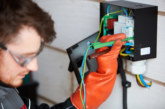Everyone is looking for a way to reduce their carbon footprints. Some do away with single-use plastics, while others buy electric cars. There are 1,001 ways for individuals to reduce their impact on the environment.
One that’s growing in popularity is the idea of net-zero carbon. The goal of net-zero construction is to create homes and buildings that produce as much energy as they consume while being as energy-efficient and environmentally-neutral as possible.
What goals have countries set for themselves when it comes to emissions, and what do these net-zero carbon emission goals mean for the home construction industry?
Net-Zero Goals
As of 2021, 191 of the 197 countries in the world have joined the Paris Climate Agreement. One of the biggest parts of this agreement is the goal to reach net-zero emissions by 2050, just under 30 years from now. This is a massive goal to achieve in just three decades, and it will take every member nation working together toward this common end.
The positive side of this endeavor is that the technology to reach that net-zero goal already exists, and it’s getting more affordable every year. A couple of decades ago, equipping a house with solar panels would have been out of reach for all but the most wealthy. Now, homeowners can access solar technology and other green energy without waiting to win the lottery.
While a majority of the big changes will need to be done on the industrial level, everyone can make small changes and help reduce the carbon emissions they help generate. That is where net-zero home construction comes in.
Net-Zero Home Construction
There are multiple levels that go into making a net-zero home, from the construction materials you choose to the design and even its connection — if any — to local power and water grids.
Start by obtaining materials from sustainable sources or utilizing recycled materials. More than 550 million tons of construction debris get sent to landfills every year, with more than 90% coming from demolition byproducts.
Much of this waste — from concrete and wood to plastics and metals — can be recycled or directly reused to reduce the project’s carbon footprint.
Next, incorporate energy efficiency into the design as you’re building from the ground up. That means including things like floor, wall, and attic insulation, sealed doors, and double- or triple-pane windows that don’t contribute to heat loss.
If you’re installing appliances, choose energy-efficient or Energy Star-rated options, including the home’s new HVAC system. These appliances often qualify for tax credits depending on where you reside.
Finally, one of the main goals of a net-zero home is to generate more power than it uses. Include things like support for rooftop solar panels in the design, or work with other local contractors to ensure everything is good to go by the time your client is ready to move in.
The Future of the Construction Industry
With the vast majority of the world’s countries working toward that net-zero goal by 2050, sustainable construction will continue to grow in popularity and accessibility. This is the perfect time to get in on the ground floor and start offering net-zero projects before the technology makes the transition from option to requirement.
Jane Marsh is an environmental writer who covers environmental topics on sustainable construction, renewable energy and green building materials and the editor-in-chief of Environment.co.









